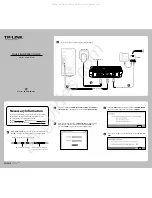
1-5
ip-address is a 32-bit source IPv4 address in the form of a.b.c.d or abcd:efgh, which need not be
globally unique. Through the embedded IPv4 address, an ISATAP tunnel can automatically be created
to transfer IPv6 packets.
The ISATAP tunnel is mainly used for connection between IPv6 routers or between a host and an IPv6
router over an IPv4 network.
Figure 1-2
Principle of ISATAP tunnel
IPv4 over IPv4 Tunnel
Introduction to IPv4 over IPv4 tunneling protocol
The IPv4 over IPv4 tunneling protocol (RFC 1853) is developed for IP data packet encapsulation so that
data can be transferred from one IPv4 network to another IPv4 network.
Encapsulation and decapsulation
Packets traveling through a tunnel undergo an encapsulation and decapsulation process.
Figure 1-3
shows these two processes.
Figure 1-3
Principle of IPv4 over IPv4 tunnel
z
Encapsulation
The encapsulation process is as follows:
1) The interface of Router A connecting to an IPv4 host receives an IP packet and submits it to the IP
protocol stack for processing.
2) The IP protocol stack determines how to route the packet according to the destination address in
the IP header. If the packet needs to be routed to the IPv4 host connected to Router B, the packet
is sent to Router A’s tunnel interface that is connected to Router B.
3) After the tunnel interface receives the packet, the packet is encapsulated and submitted to the IP
protocol stack for processing. The IP protocol stack determines the outgoing interface of the tunnel
according to the IP header.
z
Decapsulation
Contrary to the encapsulation process, the decapsulation process is as follows:
Summary of Contents for S7902E
Page 82: ...1 4 DeviceA interface tunnel 1 DeviceA Tunnel1 service loopback group 1 ...
Page 200: ...1 11 DeviceB display vlan dynamic No dynamic vlans exist ...
Page 598: ...ii ...
Page 1757: ...4 9 ...
Page 1770: ...6 4 ...
Page 2017: ...2 11 Figure 2 3 SFTP client interface ...
Page 2238: ...1 16 DeviceA cfd linktrace service instance 1 mep 1001 target mep 4002 ...
















































